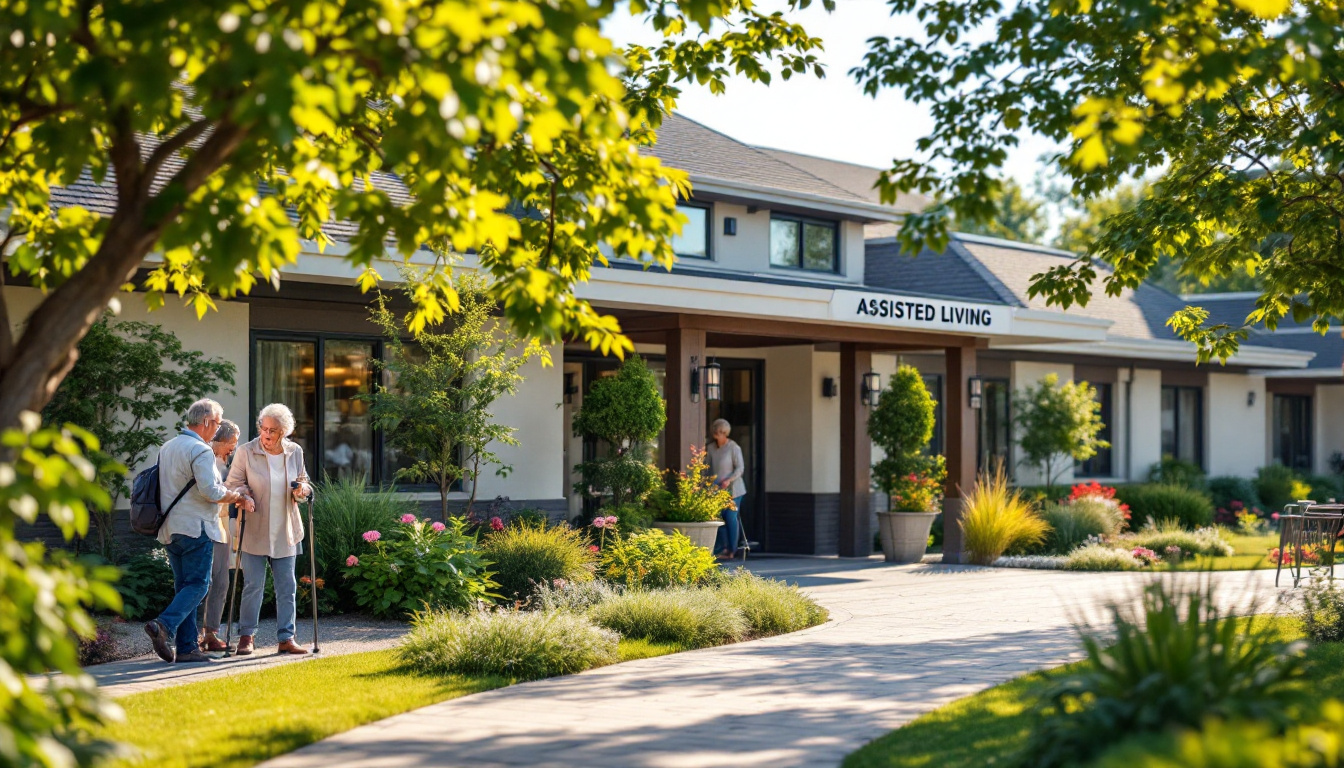What to Expect During the Senior Care Placement Process
Navigating the Journey to the Right Senior Care

Understanding the Path to Quality Senior Living
Choosing the appropriate senior care environment involves multiple stages, from assessment and research to tours and final placement. Understanding what to expect during this process can ease family concerns and facilitate a smoother transition for your loved one. This guide provides an in-depth overview of each phase, highlighting key considerations and tips to navigate the senior care placement journey effectively.
Initial Consultation and Comprehensive Assessment

What are the general steps involved in the senior care placement process?
The process typically starts with an initial consultation and comprehensive assessment, where the placement agency gathers vital information about the senior’s health, lifestyle, and social needs. During this phase, professionals evaluate medical conditions, mobility levels, cognitive functions, and safety considerations to understand the senior’s specific care requirements.
Getting a clear picture of the senior’s financial situation and personal preferences is equally important. This helps the agency recommend options that are not only suitable in terms of health and safety but also affordable and aligned with the senior’s lifestyle desires.
Following this assessment, the agency researches various care communities that match the senior's needs. They compile tailored recommendations and help families plan facility tours, making the selection process less overwhelming.
The agency’s involvement continues with assistance in reviewing contracts and managing paperwork, ensuring all legal and administrative aspects are properly handled. They coordinate the move, support the senior during the transition, and often provide follow-up services post-move to promote comfort and satisfaction.
By undertaking these detailed steps, a senior placement agency ensures that seniors find a living environment that best fits their medical, emotional, and social needs, creating a smooth and supportive transition to a new chapter in life.
Researching, Selecting, and Touring Communities

How can I navigate the senior care placement process effectively?
Navigating the senior care placement process can seem overwhelming, but with a structured approach, it becomes manageable. Begin with a comprehensive assessment of the senior’s health, daily activity needs, social preferences, and desired location. This helps narrow down suitable care options.
Differentiating between various care settings such as independent living, assisted living, memory care, and nursing homes is essential. Each offers different levels of assistance, security, and medical support. For example, independent living provides a maintenance-free lifestyle for active seniors, while assisted living offers help with daily tasks. Memory care facilities specialize in cognitive impairments, and nursing homes provide intensive medical attention.
Using agency resources can significantly ease this process. Experienced placement agencies have extensive databases of facilities, allowing them to evaluate options based on the senior’s needs, budget, and preferences. They arrange tours, provide honest recommendations, and assist in understanding costs and services.
Preparing for facility tours involves formulating relevant questions. Inquire about staff qualifications, safety features such as emergency response systems, daily activities, meal plans, and resident-to-staff ratios. It’s also wise to ask about residents' quality of life, access to medical services, and policies on visitors.
Throughout the journey, involve the senior in decision-making to respect their wishes and ensure emotional comfort. Don’t rush — take time to visit multiple communities, observe the environment, and gather firsthand impressions.
In summary, effectively navigating senior care placement requires thorough research, leveraging professional assistance, and actively engaging in tours with well-prepared questions. This approach helps ensure that the chosen community is a comfortable, safe, and supportive environment tailored to the senior’s unique needs.
Managing Costs, Paperwork, and Transition Procedures

What costs and procedural considerations should I be aware of during the senior care placement process?
When planning for senior care, it's essential to understand the various financial aspects involved. Costs include monthly rent or care fees, upfront entrance or admission fees, and additional charges for specialized services such as medical care or personal assistance. These expenses can vary significantly across facilities and services.
Though many placement services, like My Care Finders, offer their guidance for free, the senior care communities typically pay the agency—often based on the first month’s rent or a negotiated fee—making the process cost-effective for families.
Procedurally, the placement journey begins with an in-depth assessment involving an in-person interview. This helps determine the senior's health needs, preferences, and financial situation. Understanding the contractual terms, payment schedules, and potential legal paperwork, including health directives and power of attorney, is critical before finalizing a placement.
Families should also explore Medicaid options, which can offer financial assistance through waivers and benefits for services like personal care, home modifications, or respite care. Careful planning, clear understanding of costs, and procedural requirements can lead to a smoother transition and peace of mind.
In summary, being aware of the financial commitments and procedural steps involved ensures that families can make informed decisions and secure suitable care arrangements for their loved ones.
| Cost Type | Description | Additional Notes |
|---|---|---|
| Monthly fees | Regular payments for residence or care services | Varies based on facility and service level |
| Entrance fees | One-time upfront costs for admission | Can sometimes be negotiated |
| Additional charges | Extra costs for specific services or amenities | Includes medical care, transportation, etc. |
| Agency payments | Fees paid to placement agencies, usually from the facility | Often based on the first month’s rent |
| Financial assistance | Programs like Medicaid or waivers | Offset costs and qualify for benefits |
Facilitating the Move and Ensuring a Successful Transition
 When transitioning a loved one into a senior living community, careful planning and compassionate support are essential. The process begins with organizing packing carefully, focusing on sentimental items and necessities that will make the new environment feel familiar and comfortable. This can help ease anxiety and foster a sense of home.
When transitioning a loved one into a senior living community, careful planning and compassionate support are essential. The process begins with organizing packing carefully, focusing on sentimental items and necessities that will make the new environment feel familiar and comfortable. This can help ease anxiety and foster a sense of home.
Familiarizing the senior with their new surroundings is another crucial step. Arranging visits or temporary stays allows them to get comfortable with the new environment, reducing uncertainty and building confidence in the transition. Regular visits and encouraging participation in community activities after settling in can boost their social engagement and overall well-being.
Providing emotional support throughout this change is vital. Families should maintain open communication, listen to concerns, and offer reassurance. Patience and ongoing encouragement help seniors adjust emotionally and physically to their new living situation.
Additionally, helping the senior meet neighbors and get involved in activities fosters a sense of community and belonging. These steps not only promote emotional stability but also help integrate them into their new surroundings more seamlessly.
Effective transition involves collaboration, patience, and ongoing support, making the process smoother and more positive. Careful planning and emotional involvement ensure that seniors feel secure, valued, and happy in their new home.
For those seeking more guidance, searching for information on "moving and settling into senior living community" can provide additional practical tips and resources.
Post-Move Follow-Up and Ongoing Support
How do senior care providers ensure ongoing satisfaction and support for residents?
After a senior has moved into a care community, continuous follow-up is essential to maintain their well-being and happiness. Regular check-ins are scheduled by the staff to assess how the resident is adjusting physically, emotionally, and socially. These visits help identify any emerging health issues or concerns early, allowing for timely intervention.
Monitoring a resident’s adaptation and care needs involves ongoing assessment of their health status, daily routines, and social engagement. Staff may adjust care plans based on changes in health conditions or preferences, ensuring that the level of support remains appropriate.
Providing continued assistance includes offering resources and guidance for families, such as counseling, support groups, or medical services. Facilities often work with families to coordinate medical appointments, therapy, and social activities, maintaining a holistic approach to care.
What resources and tips can help ensure a successful senior care placement?
To help create a positive and enduring placement experience, start planning well in advance. Educate yourself on available options by visiting websites like Longtermcare.gov, eldercare.acl.gov, and Where You Live Matters. These platforms offer valuable information on different types of care and costs.
Utilize professional placement agencies and support groups to gather insights and assistance, making the decision process smoother. Financial planning is crucial—explore funding options such as Medicaid, long-term care insurance, or reverse mortgages, with resources like Genworth.com providing guidance.
Watch for signs that indicate the need for higher-level care, including weight loss, poor hygiene, and forgetfulness. Use checklists and questionnaires to evaluate facilities thoroughly before making decisions. Active involvement of the senior in the planning process is important for ensuring their preferences and comfort.
Don’t forget to plan the logistics of the move, including packing, transportation, and adjusting living arrangements. Exploring options for home-based care or safety modifications can support seniors in maintaining their independence longer.
Such proactive planning and ongoing support are vital for ensuring that senior care placements lead to a better quality of life and peace of mind for families.
Summary: A Compassionate and Well-Informed Approach
Navigating the senior care placement process can seem complex, but with careful planning, research, and professional support, families can ensure their loved ones find a safe, comfortable, and suitable living environment. Beginning with thorough assessments, asking the right questions during tours, understanding costs and procedural requirements, and providing emotional and logistical support during the move are key to a successful transition. Remember, involving your loved one throughout and maintaining ongoing communication post-move will foster a smoother adjustment and increase satisfaction. Ultimately, a well-managed placement process reflects compassion, respect, and a commitment to quality care.
References
- What Is a Senior Living Placement Agency? - My Care Finders
- Navigating Senior Placement with Ease | Above And Beyond
- How Senior Placement Services Simplify the Search for Senior Living
- Senior Living Placement Costs | Your Care Agency if FREE
- Senior Facility Placement Services: Weighing the Benefits for Your ...
- How Online Senior Placement Agencies Work | CarePatrol
- Placement Process - Living Well- A Senior Home Referral Service ...






































































































